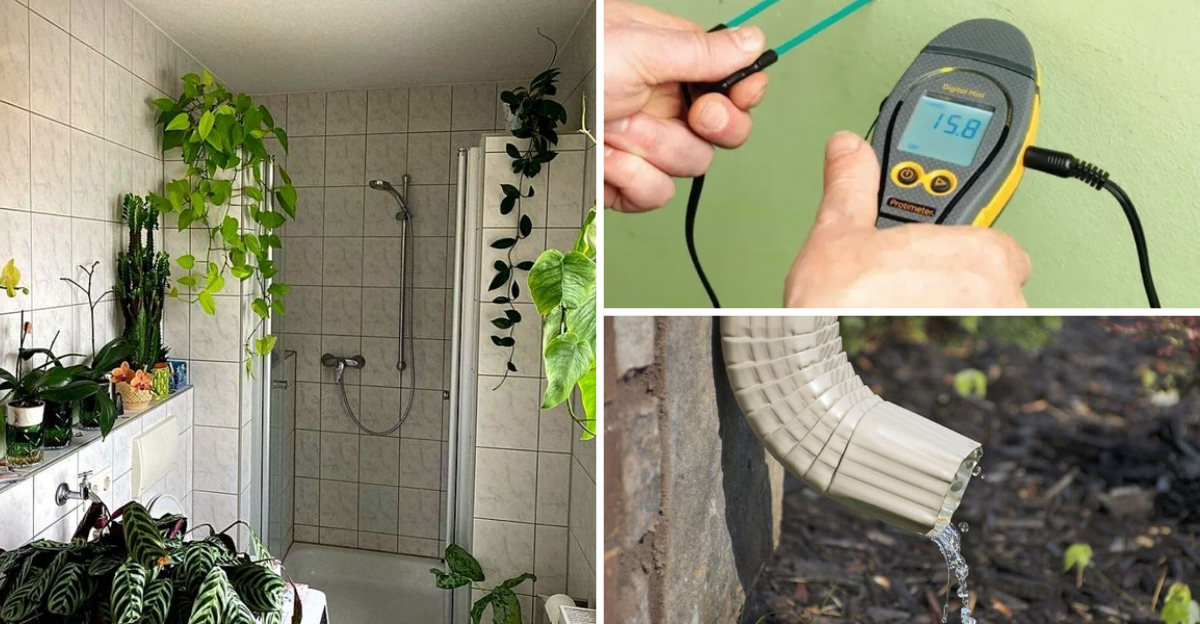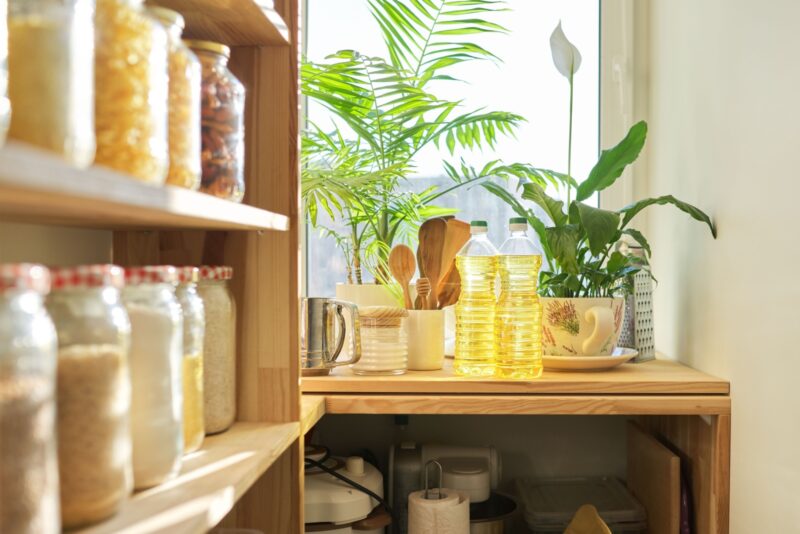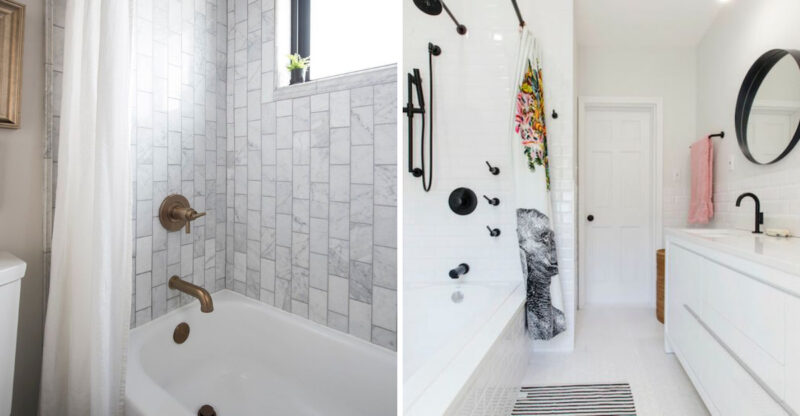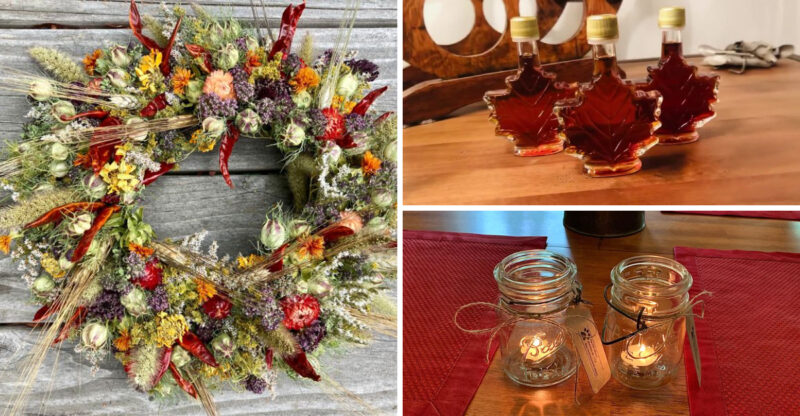Simple Fixes That Could Keep Mold From Ruining Your Texas Home

Mold is a silent invader in many Texas homes, thriving in our humid climate and causing both property damage and health problems. The good news?
You don’t need to be a professional to fight back against this fuzzy menace. With Texas’s unique weather patterns creating perfect conditions for mold growth, these simple fixes can help protect your home and family from the headaches that come with mold infestations.
1. Fix Leaky Pipes Immediately
Water from leaky pipes creates a playground for mold spores looking to settle down and multiply. Even small drips under sinks or behind toilets can lead to major mold colonies if left unchecked for just a few days.
I always keep plumber’s tape in my toolkit for quick fixes on minor leaks. For bigger problems, calling a plumber quickly is worth every penny when you consider the alternative moldy drywall and cabinets that cost thousands to replace.
If you’ve already spotted water stains on walls or ceilings, there’s likely a hidden leak that needs attention right away. Remember, what looks like a tiny problem today could become a moldy nightmare next week in our Texas humidity.
2. Control Indoor Humidity Levels
High humidity is mold’s best friend, especially in our Texas climate where outdoor moisture seems to find its way indoors. Investing in a good dehumidifier has saved my walls from becoming mold farms during our infamous muggy summers.
The sweet spot for indoor humidity is between 30-50%. Anything higher creates perfect conditions for mold to thrive. I picked up a simple humidity meter (hygrometer) for less than $10, and it helps me know when to run my dehumidifier.
Bathrooms and laundry rooms tend to be humidity hotspots in most homes. Running exhaust fans during and after showers or keeping a small dehumidifier in these spaces makes a huge difference in keeping mold at bay.
3. Improve Air Circulation Throughout Your Home
Stagnant air creates pockets where moisture lingers and mold thrives. I’ve found that simply running ceiling fans daily helps keep air moving and reduces the chances of mold finding a comfortable spot to grow.
During those sticky Texas days, I make sure to open interior doors between rooms to allow air to flow freely throughout the house. This simple habit prevents moisture from building up in closed-off spaces like guest bedrooms or rarely used bathrooms.
Strategic placement of floor fans can also target problem areas prone to dampness. The corner of my bedroom that always felt slightly damp improved dramatically once I positioned a small fan to keep air circulating there. Moving air is your ally in the fight against mold.
4. Clean Gutters and Fix Drainage Issues
Clogged gutters force water to spill over the sides of your house, soaking into walls and creating damp conditions that mold absolutely loves. I check my gutters twice a year once in fall after leaves drop and again in spring.
Where water flows matters too. Downspouts should direct water at least 5-6 feet away from your foundation. After our last big Texas thunderstorm, I noticed water pooling near my foundation and added simple downspout extensions that solved the problem immediately.
The soil around your house should slope away from the foundation to prevent water from collecting. If you notice dips where water gathers, filling them with soil can prevent moisture from seeping into your home’s foundation and creating ideal conditions for mold.
5. Use Mold-Resistant Products When Remodeling
If you’re planning any home updates, choosing mold-resistant materials is a smart investment for Texas homeowners. Mold-resistant drywall has a fiberglass facing instead of paper, giving mold spores nothing to feed on.
Mold-resistant paint contains antimicrobial additives that help prevent mold growth on walls and ceilings. I used this in my bathroom renovation last year, and despite our humid Houston climate, the walls have remained mold-free.
Don’t forget about grout when tiling bathrooms or kitchens! Choosing mold-resistant grout and sealing it properly creates another barrier against moisture infiltration. These products might cost slightly more upfront, but they’ve saved me countless hours of scrubbing and worry about what might be growing behind my walls.
6. Seal Windows and Doors Properly
Gaps around windows and doors don’t just let in hot Texas air – they also invite humidity that can lead to condensation and mold growth. I discovered this the hard way when mold started appearing around my bedroom window frame during a particularly rainy season.
Weather stripping is an inexpensive fix that makes a huge difference. I replaced the worn-out seals around my doors and windows in an afternoon, and immediately noticed less condensation forming on glass surfaces during temperature swings.
Caulking around window frames, both inside and outside, provides another layer of protection against moisture intrusion. This simple weekend project has prevented water from seeping into walls where mold loves to hide. Plus, the improved sealing has lowered my energy bills by keeping conditioned air inside where it belongs.
7. Maintain Your AC System Regularly
Your air conditioner does more than keep you cool during brutal Texas summers – it’s also your main defense against humidity. When my AC wasn’t running efficiently last August, I noticed a musty smell developing throughout the house.
Changing air filters monthly during heavy-use periods prevents your system from circulating mold spores throughout your home. I set a reminder on my phone because it’s easy to forget this simple maintenance task.
Having your AC professionally serviced before summer hits ensures it’s removing humidity properly. The technician who checked mine found condensation building up due to a clogged drain line – a perfect recipe for mold growth. Regular maintenance costs far less than dealing with a mold remediation team or replacing moldy drywall around vents and ducts.
8. Address Water Damage Within 24-48 Hours
When it comes to water and mold, time is truly of the essence. After a pipe burst in my kitchen, I learned that mold can begin growing in as little as 24 hours after water exposure – a frightening reality in our warm Texas climate.
Quick action makes all the difference. I immediately pulled up the soaked area rug and used fans to dry out the affected flooring. For larger water events, renting industrial dehumidifiers and air movers from local hardware stores can prevent thousands in mold remediation costs.
Don’t forget to check inside walls and under floors if water has seeped in. My neighbor ignored a small roof leak during a storm, only to discover black mold had colonized her attic and ceiling just two weeks later. Addressing moisture promptly is the single most effective way to prevent mold from taking hold.
9. Keep Indoor Plants in Check
Houseplants add life to our homes, but they can also contribute to indoor humidity if we’re not careful. I’ve found that limiting plants in areas already prone to moisture, like bathrooms and laundry rooms, helps keep mold at bay.
Overwatering is a common mistake that creates perfect conditions for mold growth in soil and on nearby surfaces. I switched to bottom-watering my plants, which prevents excess water from sitting in saucers and evaporating into the air.
Adding a layer of aquarium gravel on top of soil helps reduce moisture evaporation while also preventing mold from growing on soil surfaces. If you notice mold starting to form on plant soil, sprinkle ground cinnamon on the surface it’s a natural antifungal that has saved several of my plants without using harsh chemicals in my Texas home.
10. Dry Wet Areas Immediately
Spills, splashes, and steam are inevitable, but letting them linger creates an open invitation for mold. After showering, I wipe down tile walls and glass doors with a squeegee – it takes 30 seconds but prevents hours of scrubbing mold from grout later.
Kitchen spills need immediate attention too. That pot that boiled over or splash zone around the sink can become mold territory if left damp. I keep microfiber cloths handy for quick wipe-downs of counters and backsplashes after cooking or washing dishes.
Wet towels and bathmats are often overlooked mold sources. Instead of hanging damp towels on hooks where they dry slowly, I installed a towel bar that allows air circulation on all sides. Small habits like these have made a noticeable difference in keeping mold out of my bathroom, even during humid Houston summers.
11. Clean and Vacuum Regularly
Dust and dirt aren’t just unsightly – they’re food sources for mold. I’ve found that vacuuming with a HEPA filter twice weekly dramatically reduces the organic matter that mold needs to thrive in our Texas home.
Don’t forget those hidden spots where dust collects: behind furniture, under beds, and on ceiling fans. These areas can harbor moisture and dust that combine to create perfect mold habitats. Moving furniture occasionally to clean thoroughly has revealed potential problem spots before mold could take hold.
Washing bathroom surfaces weekly with vinegar or hydrogen peroxide prevents mold from establishing colonies in grout and caulk. Unlike bleach, which only bleaches mold temporarily, these cleaners actually kill mold spores. Regular cleaning interrupts the mold life cycle and keeps your home healthier without harsh chemicals that can damage surfaces over time.
12. Insulate Cold Surfaces to Prevent Condensation
When cold water pipes run through warm, humid Texas air, condensation forms – creating perfect conditions for mold. I discovered this when mold appeared on the wall behind my refrigerator where cold water lines were creating constant moisture.
Pipe insulation sleeves are inexpensive and easy to install on exposed plumbing. After adding these foam covers to the pipes under my sinks and behind appliances, the condensation problem disappeared completely.
Windows can create similar issues during temperature extremes. During winter, the glass becomes cold while indoor air stays warm and humid, creating condensation. Installing storm windows or even applying window insulation film during extreme temperature periods has eliminated this condensation problem in my home. These simple barriers prevent the temperature differential that causes moisture to form on surfaces.
13. Monitor Problem Areas with Moisture Meters
Some areas in homes are naturally more susceptible to mold – basements, crawl spaces, and areas with previous water damage top the list. I invested in an inexpensive moisture meter that helps me detect problems before they become visible.
Regular checks of walls near bathrooms, under sinks, and around windows give me peace of mind. The first time I used my moisture meter, I discovered elevated moisture levels in my laundry room wall leading me to find and fix a slow leak in the washing machine hose before mold could develop.
For Texas homeowners with pier and beam foundations, checking crawl space moisture levels is crucial. High readings might indicate the need for better ventilation or a vapor barrier installation. This proactive approach has saved me thousands in potential remediation costs by catching moisture problems early, when they’re still easy and inexpensive to fix.






